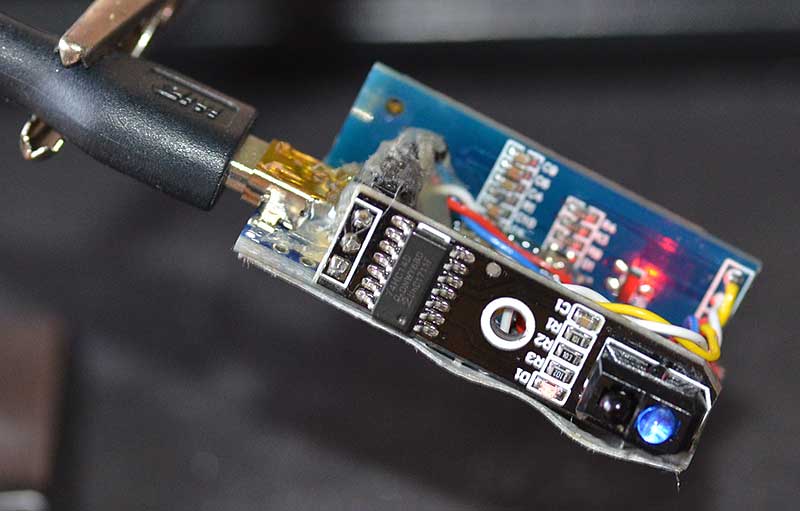
What is a Tachometer in Aviation and How Does it Work?
Share
When it comes to understanding the intricate workings of aviation technology, one device that often piques interest is the tachometer. So, what is a tachometer aviation? This essential instrument plays a crucial role in airplane operation by measuring the rotational speed of the engine. Affected by the mechanics and dynamics of flight, the tachometer is vital for ensuring safety and efficiency in flight operations.
The aviation tachometer indicates the revolutions per minute (RPM) of the aircraft's engine. For pilots and tech enthusiasts alike, having detailed knowledge about the tachometer is essential for monitoring engine performance thoroughly. This article seeks to unravel the complexities of this fascinating instrument and its importance in the aviation field.

The Mechanics of a Tachometer in Aviation
At its core, the tachometer in aviation uses both mechanical and electronic methods to track RPM. Most commonly found types of tachometers include mechanical and digital versions, each serving the same function but utilizing different technology.
Components of a Mechanical Tachometer
A mechanical tachometer typically includes a spinning magnet, a needle, and a scale. The spinning magnet is attached to the engine crankshaft, which rotates as the engine runs. As the magnet spins, it produces a magnetic field that affects the needle, causing it to move. The position of the needle on the scale indicates the engine's RPM. However, while flying, variations in altitude and speed can affect the readings, emphasizing the need for accurate maintenance and calibration.
Digital Tachometers
Digital tachometers are becoming increasingly popular in modern aviation. They utilize digital sensors and microcontrollers to provide accurate RPM readings. These systems can often interface with other avionics to provide comprehensive data on the aircraft's performance and health. This integration allows pilots to have immediate access to critical information in real-time, enhancing situational awareness.
The Importance of Tachometer Readings
For tech professionals and aviation enthusiasts, understanding the significance of tachometer readings is critical. It is not merely a gauge but an essential tool for maintaining engine health. Too high of an RPM can lead to mechanical failure, while too low can result in inefficient engine performance.
Moreover, variations in tachometer readings can help diagnose potential issues within the engine. For example, a sudden drop in RPM may signal a fuel issue, whereas erratic readings could suggest a mechanical malfunction. Monitoring tachometer readings accordingly allows for proactive maintenance and higher safety standards in aviation.
How Tachometers are Installed and Wired
The installation of a tachometer in an aircraft is a technical process that demands precision. For tech-savvy individuals, refer to the installation guide available online. This guide presents a step-by-step breakdown of how to install a tachometer correctly, ensuring it delivers reliable readings.
Common Types of Aviation Tachometers
There are various types of tachometers used in aviation. Each type is suited to different engine types and aircraft designs. Below are the prevalent types:
Magnetic Tachometers
Magnetic tachometers rely on the relationship between the magnetic field and electrical signals to gauge the RPM. They are widely used in small aircraft and helicopters due to their simplicity.
Optical Tachometers
Optical tachometers utilize light to measure RPM. By sending a beam of light onto a rotating disc affixed to the engine, the duration of the light pulses is interpreted to provide speed measurements. These devices provide high accuracy and are increasingly common in modern aircraft.
Electronic Tachometers
As stated before, electronic tachometers have become more prevalent due to their accuracy and connectivity with other avionics. Often, they incorporate the latest technology to handle various engine types, significantly improving data analysis and monitoring.
Maintenance and Troubleshooting of Tachometers
Understanding what is a tachometer aviation is merely the first step; maintaining it is equally important. Regular checks are necessary to ensure accuracy and functionality. Here are some key maintenance tips:
- Routine Calibration: It is crucial to perform regular calibration checks to ensure the tachometer returns accurate readings.
- Check Connections: Ensure all wires, terminals, and connections are clean and secure, preventing data loss.
- Replace Faulty Components: If a component fails, replacing it swiftly minimizes potential downtime.
For thorough troubleshooting methods, refer to this wiring guide that includes detailed instructions.
Conclusion
In summary, knowing what is a tachometer aviation is fundamental for both pilots and tech enthusiasts. Tachometers serve as a crucial component in maintaining optimal engine performance, thereby maximizing safety in aviation. Whether you are looking to enhance your flying experience or simply dive deeper into aviation technology, understanding the role and function of tachometers is indispensable.

Frequently Asked Questions
1. What is the primary function of a tachometer in aviation?
The primary function of a tachometer in aviation is to measure the rotational speed of the engine, presented in RPM, to ensure efficient engine performance and prevent damage.
2. How often should tachometers be calibrated?
Tachometers should be calibrated at regular intervals and thoroughly checked during routine maintenance to ensure accurate performance.
3. Can I install a tachometer myself?
Yes, a tachometer can be installed by knowledgeable individuals; however, it is important to follow detailed guidelines to ensure a safe and accurate installation. Refer to the wiring process for more details.
For more insights and explanations on the tachometer, you can refer to this in-depth resource.
